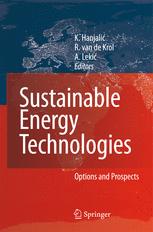

Most ebook files are in PDF format, so you can easily read them using various software such as Foxit Reader or directly on the Google Chrome browser.
Some ebook files are released by publishers in other formats such as .awz, .mobi, .epub, .fb2, etc. You may need to install specific software to read these formats on mobile/PC, such as Calibre.
Please read the tutorial at this link: https://ebookbell.com/faq
We offer FREE conversion to the popular formats you request; however, this may take some time. Therefore, right after payment, please email us, and we will try to provide the service as quickly as possible.
For some exceptional file formats or broken links (if any), please refrain from opening any disputes. Instead, email us first, and we will try to assist within a maximum of 6 hours.
EbookBell Team

4.3
48 reviewsThis book provides an up-to-date review of the status and prospects of different options in energy conversion and storage technologies, as seen by a panel of world leading experts. It offers a platform for readers engaged in planning and undertaking new energy solutions or retrofitting and redesigning the existing installations to confront and to compare the pros and cons of various novel technology options. Contributing articles cover new clean and zero-emission coal technologies, solar, wind, nuclear, fuel cells, hydrogen and hybrid technologies, accompanied by treatises on the challenge of increasing global energy needs and consumption, issues of sustainability, and on specific ideas for efficient production and use of energy based on modern rationing technologies.
The volume also offers views of feasibility of the implementation of advanced technologies especially in countries other than the few most developed industrial nations and highly populous countries, which all may have different priorities. Further, it brings together several regional surveys of needs, resources and priorities, as well as specific initiatives towards meeting future energy objectives, pursued in several countries in South-Eastern Europe.
The book targets engineers and planners in the energy sector, employees in energy utility companies, and various levels of governmental organizations and offices. It is also meant to serve as a graduate-level textbook to meet the growing demand for new courses in alternative, renewable and sustainable energy technologies at technical and general universities.